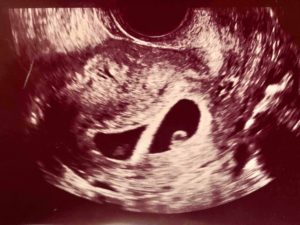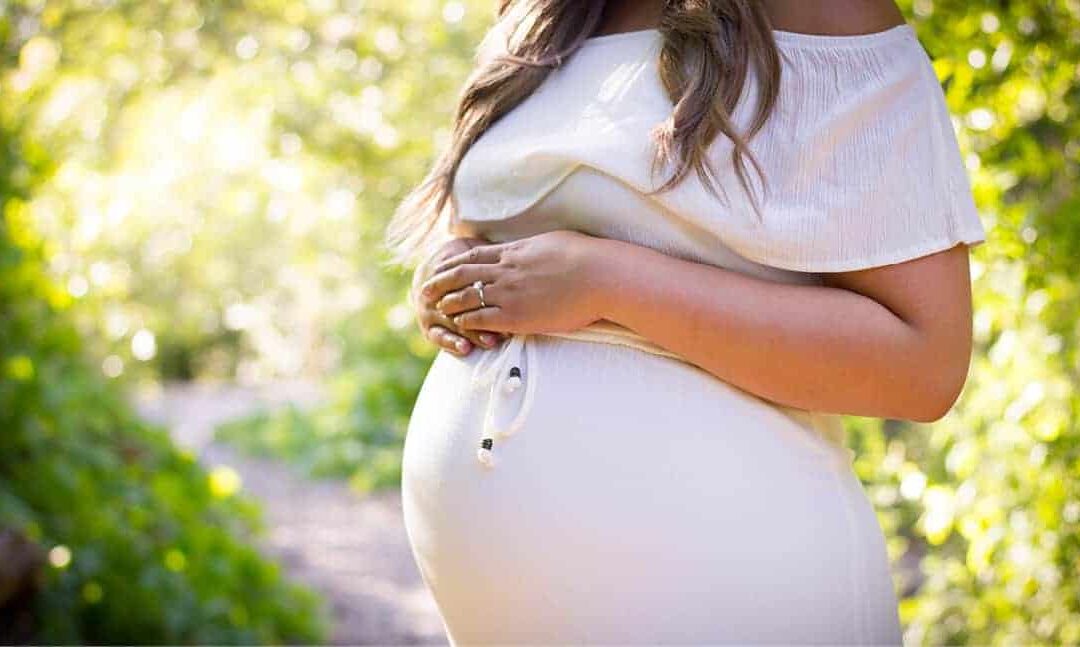This post was reviewed for medical accuracy by Rosalie Gunson, a Certified Registered Nurse Practitioner specializing in fertility care.
If you did IVF, you may wonder if your due date is more accurate than it otherwise would have been. After all, you know exactly when the eggs were retrieved and when the embryo was transferred.
The answer depends on what we mean by “accurate.”
Is your baby more likely to be born on the exact due date because you did IVF? No, but that doesn’t matter much anyway. The estimated due date (EDD) is more of a ballpark — hardly anyone delivers on their exact due date. If anything, IVF babies are more likely to be born sooner.
But it does mean your due date is less likely to be changed as your pregnancy progresses. That’s because the most common reason for adjusting a due date is an incorrect date for the last menstrual period (LMP), and with IVF you know the exact dates of everything related to your cycle.
How is the estimated due date (EDD) calculated?
Non-IVF Pregnancy
If you didn’t do IVF or any other fertility treatment, your estimated due date (EDD) would be 280 days (40 weeks) from Day 1 of the last menstrual period (LMP). This calculation is based on a textbook 28-day cycle and ovulation on CD14, which may or may not be accurate for you.
If you did fertility treatment other than IVF, your fertility doctor might use the date of your IUI or timed intercourse rather than the date of your LMP. For example, if you have PCOS and your cycles are long even on medication (letrozole, Clomid, etc.), your LMP wouldn’t be accurate for pregnancy dating purposes.
IVF Pregnancy
If you did do IVF, the estimated due date (EDD) isn’t based on your last menstrual period (LMP). Instead, it’s based on the date of egg retrieval (fresh) or the date of transfer (fresh or frozen):
- Egg retrieval: EDD is 266 days after the egg retrieval
- Day 3 transfer: EDD is 263 days after transfer day
- Day 5 transfer: EDD is 261 days after transfer day
When will you find out your estimated due date (EDD)?
Your fertility doctor will probably give you an EDD after your first ultrasound, which can be as early as 6-7 weeks.
Keep in mind that at 6 weeks, the fetus is very tiny — basically the size of a pea. It won’t look anything like a human baby!
The doctor should still be able to confirm that the fetus is in the right place (not ectopic) and developing appropriately (not a blighted ovum, etc.). Sometimes, but not always, a heartbeat can be measured this early.

A multiples pregnancy can sometimes be diagnosed this early as well. This is my first ultrasound at 6 weeks 4 days. You don’t have to be a sonographer to see it’s twins! (I should add that my twins were di/di, which means that each twin had his own sac and placenta. Ultrasounds of other types of twins can look very different than this.)
For more information about internal ultrasounds, see this post. For more information about your chances of conceiving multiples on fertility medications, see this post.
Soon after this point, you should be discharged from your fertility clinic to a regular OB. You’ll receive discharge paperwork with your bloodwork and ultrasound results. That paperwork will help clarify your EDD if your OB is unfamiliar with due dates that are not based on the LMP.
For more information about this transition, see the post Graduating from an RE to an OB for Prenatal Care.
Revising your estimated due date (EDD) based on fetal growth
Ultrasounds
Lots of women get an ultrasound somewhere in the 6-9 week range, either because they did fertility treatment or they had early symptoms that needed to be checked out (such as bleeding).
In the first weeks of pregnancy fetuses grow at a predictable rate, so it’s fairly easy to determine gestational age. The EDD could be adjusted based on that early ultrasound if fetal growth suggests that the LMP was off by a week or more. (But again, an IVF pregnancy wouldn’t be dated from the LMP.)
What about women who don’t get ultrasounds that early? A woman with a healthy, uncomplicated pregnancy may not have a scan until the second trimester. It’s possible that an EDD would be changed that late in the game, but it’s less likely.
Third-trimester revisions to the EDD are not very common at all, partly because ultrasounds late in pregnancy can be notoriously inaccurate. The earlier you can do an ultrasound, the more reliable the EDD will be.
For reference:
- First Trimester: 1-12 weeks
- Second Trimester: 13-26 weeks
- Third Trimester: 27-40+ weeks
After each ultrasound, you’ll probably be told that your baby is “measuring X weeks Y days.”
If that’s a little bit different from the gestational age from your estimated due date, don’t panic! It doesn’t mean your doctor is changing your due date. It’s just a way to monitor fetal growth.
Type A mamas out there: Please don’t expect your baby to grow in perfect alignment with the charts. A discrepancy of a few days to a week doesn’t mean anything is wrong!
Fundal height
A fast and easy way to get a sense of fetal growth without an ultrasound is to measure fundal height. That’s the distance between the top of your uterus and your pubic bone.
In general, doctors want to make sure your fundal height is increasing appropriately as the pregnancy continues, but the actual measurement is important, too.
The rule of thumb is that (after 20 weeks) the fundal height in centimeters corresponds to the gestational age in weeks. So a woman who is 30 weeks pregnant should have a fundal height around 30 cm, give or take.
Would your doctor change your due date based on the fundal height alone? No, but fundal height measurements out of the expected range could flag possible complications.
A few reasons for “measuring ahead” include multiples pregnancy, obesity, uterine fibroids, high fluid levels, and an unusually large baby (perhaps from gestational diabetes). Women who have had babies before may also have a big belly, just because their abdominal muscles are stretched.
“Measuring small” can indicate different complications, such as low fluid levels or intrauterine growth restriction (IUGR).
In both cases, the doctor would likely order an ultrasound to check on the baby’s development.
Fundal height with twins
For some women, a big fundal height is their first clue that they’re having twins. That’s not usually the case with fertility patients, though, because they would have had an ultrasound much sooner.
Once a twin pregnancy has been diagnosed, the fundal height becomes pretty much meaningless. The scale is based on a singleton, so twin mamas are always “measuring ahead.”
As far as I can tell, the only point of measuring the fundal height for a twin pregnancy is bragging rights. It’s fun to tell people your belly measured 50 or 55 weeks and watch their jaws drop!
Likelihood of giving birth on your due date
It’s important to view the due date as more of a guideline than a deadline. Fixating too much on that date can lead to unnecessary stress and more birth interventions. Believe it or not, only about 5% of babies are born on their exact due date!
In fact, your baby could be born a full 7 days before the due date and still be considered full-term. These are the current guidelines from the American College of Obstetricians and Gynecologists (ACOG) and the Society for Maternal-Fetal Medicine (SMFM):
- Early term: 37 weeks through 38+6
- Full term: 39 weeks through 40+6
- Late term: 41 weeks through 41+6
- Post term: 42 weeks+
If you know you’re going to deliver before 40 weeks, is your EDD moved up?
Mamas with complicated pregnancies may already know they’re not going to make it to 40 weeks, but the baby’s original estimated due date (EDD) would not change.
For example, a baby due on June 20 would still have an EDD of June 20, even if a c-section was scheduled for May. Changing the EDD to the date of the c-section would suggest that the baby was born at full-term, which wouldn’t be true.
Similarly, if you’re pregnant with multiples, your medical team will continue to base all the dating on a 40-week pregnancy — they just won’t expect you to actually make it to 40 weeks. Almost 60% of twins are born before 37 weeks.
Throughout my pregnancy my EDD was February 9th. I used to tell people, “‘I’m technically due in February, but I’m having twins, so they’ll be born sometime in January.” I turned out to be wrong — we did make it to February!
Conclusion
The point of an estimated due date (EDD) isn’t really to predict the baby’s birthday — it’s to indicate gestational age. That’s a pretty important thing to get right.
Luckily, there’s no guesswork involved in dating an IVF pregnancy. You and your medical team should have all the dates needed to calculate an accurate estimated due date for your miracle baby — or babies!

 This post was last updated in June 2020.
This post was last updated in June 2020.



 I’m Jenn! Here I am with my beautiful twin boys. My pregnancy was possible thanks to fertility treatment for PCOS.
I’m Jenn! Here I am with my beautiful twin boys. My pregnancy was possible thanks to fertility treatment for PCOS.


